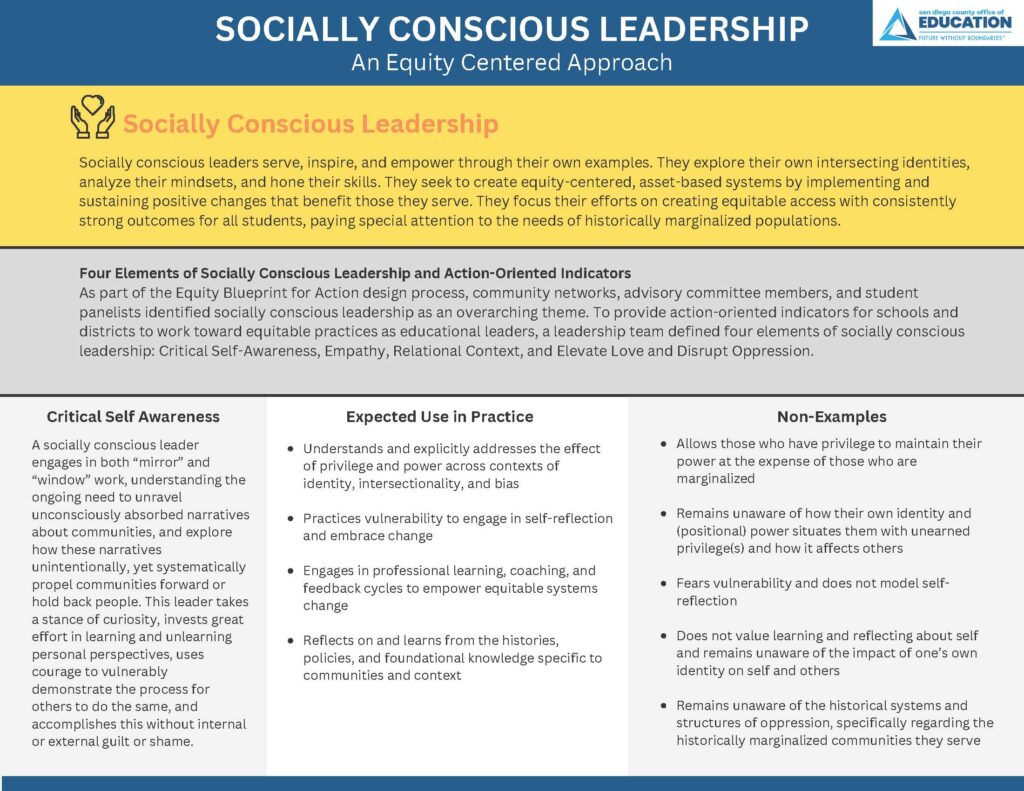Definition of Socially Conscious Leadership
Definition of Socially Conscious Leadership
Take a moment to reflect by asking yourself the following series of questions:
The above questions will encourage leaders to begin the process of thinking about their lived experiences and how they show up in the world around them. Leadership is not easy. Leadership is not a formula. There are many competing priorities on a school campus and the day to day lived experience can spin a leader in 50 million directions. Leaders can easily get stuck in an unhealthy place of thinking. Beginning the journey to becoming a socially conscious leader requires leaders to practice pausing and reflecting. Without taking the moment to pause and reflect on thinking and decisions, lasting decisions can negatively impact students, staff, and the whole school community.
Socially Conscious Leadership is action oriented and core leadership. Think about the core of an apple. First, visualize an apple. Then, think about what is inside of an apple. Within an apple, there are seeds. The seeds can reproduce fruit when planted, watered, nutrients, and monitoring. Socially Conscious Leadership must be at the core of everything that we do. To understand Socially Conscious Leadership, there are four key elements. Critical Self Awareness, Empathy, Relational Context, and Elevate Love and Disrupt Oppression.
Four Elements of Socially Conscious Leadership and Action-Oriented Indicators
A socially conscious leader engages in both “mirror” and “window” work, understanding the ongoing need to unravel unconsciously absorbed narratives about communities, and explore how these narratives unintentionally, yet systematically propel communities forward or hold back people. This leader takes a stance of curiosity, invests great effort in learning and unlearning personal perspectives, uses courage to vulnerably demonstrate the process for others to do the same, and accomplishes this without internal or external guilt or shame.


